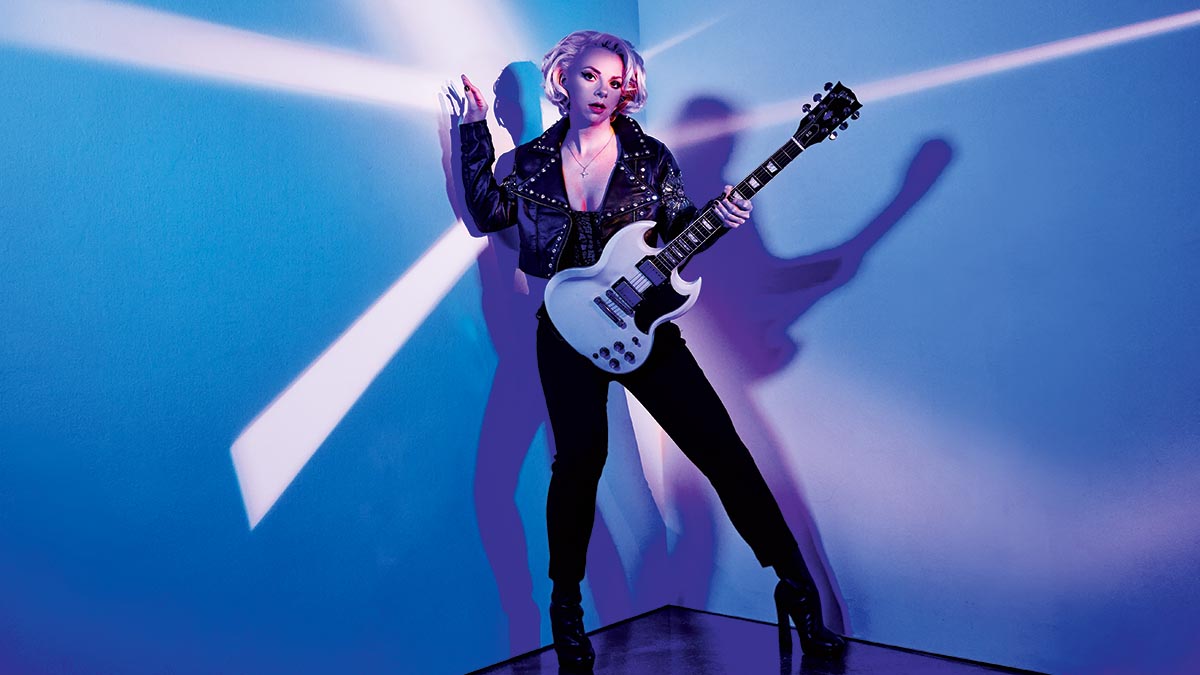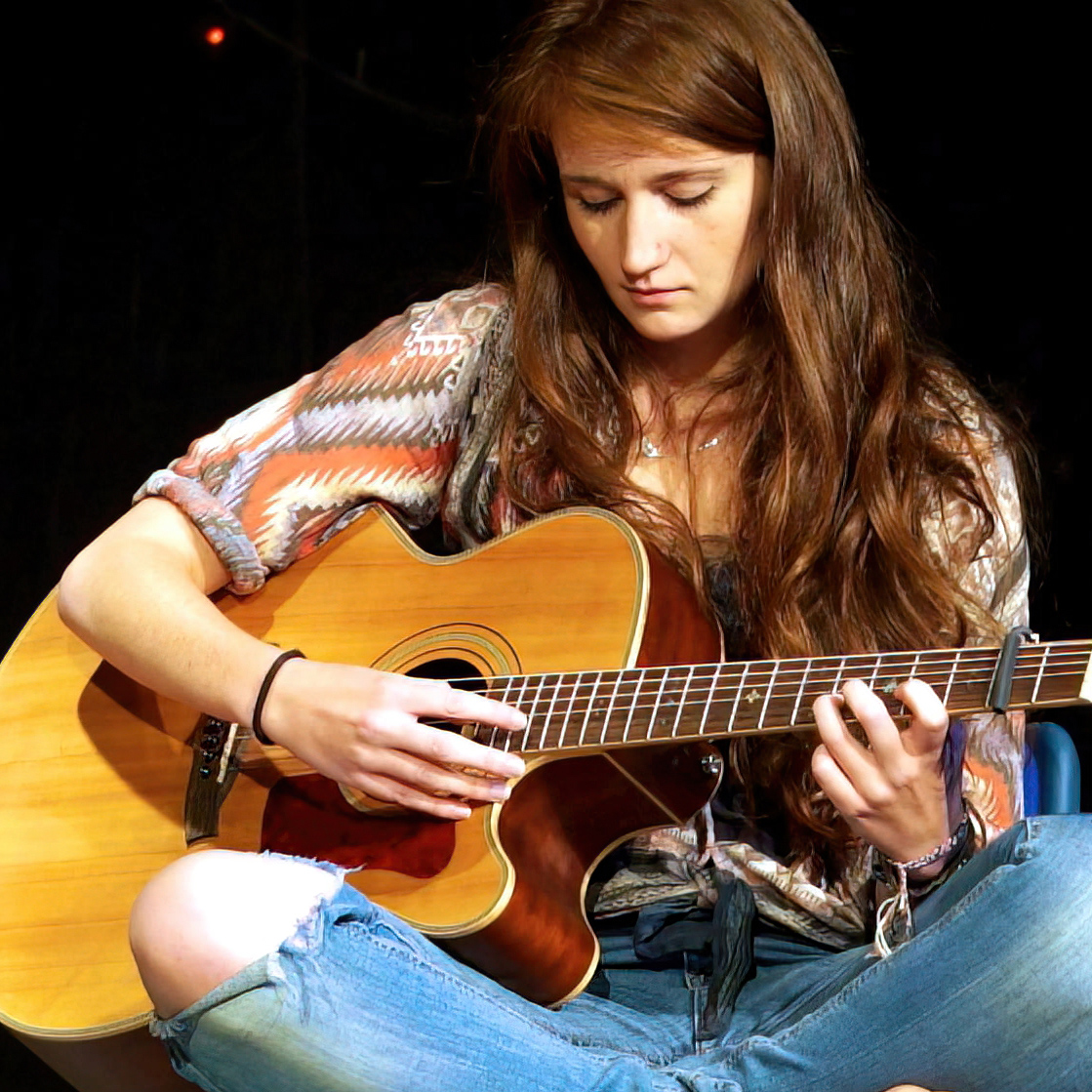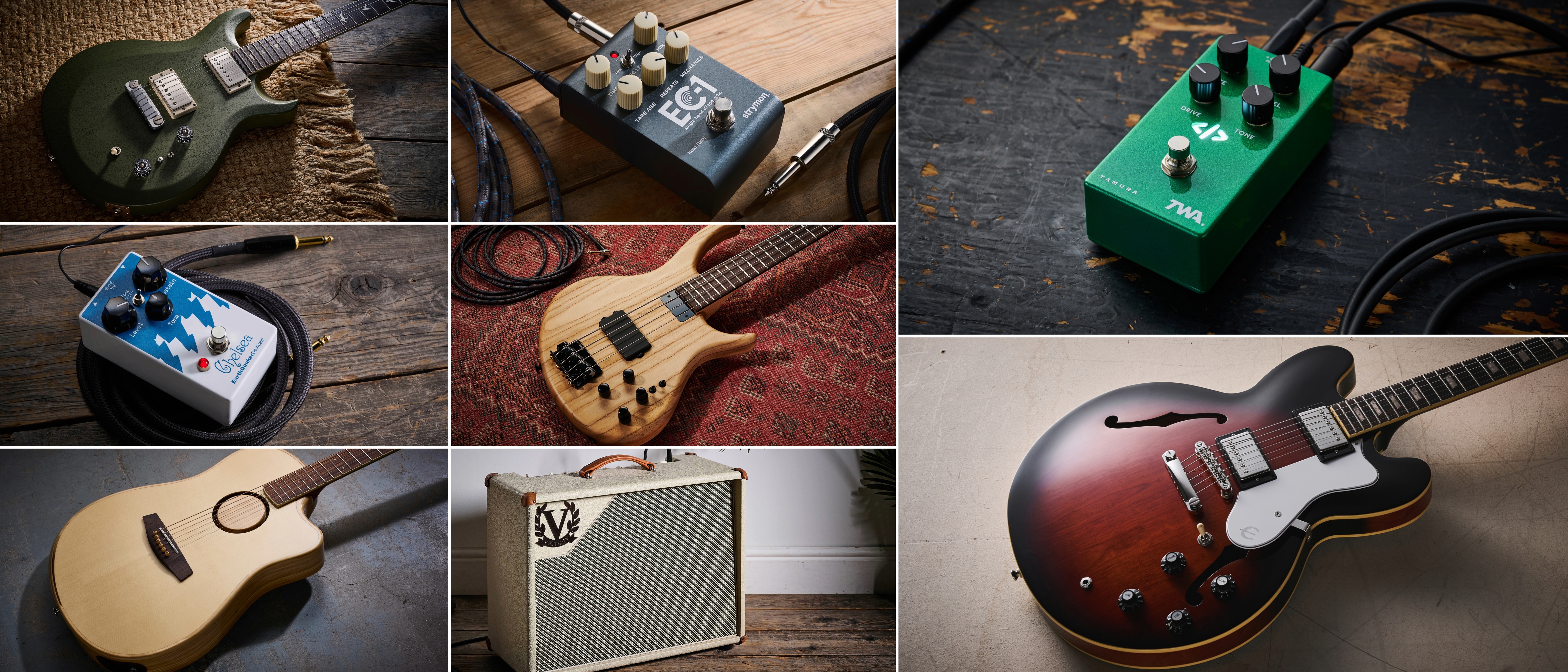Samantha Fish: ”I’m finding modern tones to incorporate with the blues and rock ’n’ roll”
Pushing the boundaries of blues-rock with new album Faster, the Kansas City six-stringer is bringing her pop influences to the fore, and finding tone magic in a small combo driven hard

Samantha Fish’s seventh album, Faster, does just as its title suggests and takes things up a notch or two. The hooks are catchier than ever, the guitar work has yet more fire and, as the slightly provocative album artwork suggests, the record leaves the listener in little doubt that the Kansas City-born singer-songwriter is here to deliver straight-up swagger, with zero apologies.
One of the overwhelming characteristics of Faster is that it in no way sounds or feels as if it were written in a time of global crisis, anxiety and restrictions. Says Samantha, “This is such a fun, exciting record and I really thought that it might go the other way when I first started the writing process.”
As an artist who normally tours hard and writes on the road, the housebound writing process offered a little escapism. “I think we all kind of hit this wall last year,” she says, “and I just started writing from this place of where I wanted to be, rather than where I was actually at. I feel like the best thing that came out of that was this empowering, upbeat, confident ‘take charge and control''' kind of a record.”
As the follow-up to 2019’s Kill Or Be Kind, the new album marks Samatha’s first collaboration with producer Martin Kierszenbaum, who has previously worked with Lady Gaga, Madonna and Sting. It’s perhaps unsurprising then, that Faster has a pop sheen that sits atop the raw, bluesy undercurrents of the material.
“I kind of want to push the boundaries of what people consider blues to be,” Samantha explains. “But also, I really like to involve different sounds. I listen to an eclectic bunch of music – I’m into pop and I’m into industrial – so it’s just kind of finding these different modern tones to incorporate with the blues and rock ’n’ roll.”
For this album, she headed to the West Coast for the first time, and cut the record at The Village – the world famous Los Angeles recording complex, housed in a 1920s Masonic Temple.
Over the years, Samatha has made much of the way a recording location influences the outcome and character of the end product, explaining, “It shapes your mood when you’re in there.” Of The Village, she notes, “That place has just got so much history and you’re like, ‘Okay, this is the mood I’m in while I’m here making this album’, and it definitely colours it. It’s the backdrop for everything.”
All the latest guitar news, interviews, lessons, reviews, deals and more, direct to your inbox!
Sporting a Fleetwood Mac T-shirt for this interview, she admits, “Knowing that a Fleetwood Mac record was done there at The Village, I listened to that a bunch” – that record being 1979’s Tusk.
As for other sonic inspiration, she cites always having The Rolling Stones “on rotation”, and says that gearing up to go into the studio she “brushed up on the famous and legendary records” including those of Lady Gaga, Prince, Elton John, David Bowie, Tom Petty and the Heartbreakers, and North Mississippi Blues players - particularly the Fat Possum roster.
Altogether these artists might make for an incohesive mixtape, elements of each can be heard on Faster, and their influences are expertly balanced with a contemporary feel.
For example, on Hypnotic, she explains how she considered, “What would Prince do?” The result is a bouncy and spacious R&B track, reminiscent of Prince’s mid-'80s hits Raspberry Beret and Kiss.
She laughs, “Can I cuss?”, before adding, “I wanted it to feel stylish and to feel like I don’t give a fuck. It’s supposed to have this swagger to it. So when I was thinking about the artists and the people who I look up to – Prince is definitely one who was just unapologetically himself – and I feel like that song channels that spirit.”
Elsewhere, tracks such as Twisted Ambition boast a frenetic energy and an ethos of female independence with ripping solos, bright lead tones and empowered vocals.
With strong hooks and melodies at the core of the record’s sound, she cites Loud as having a melodic motif that she’s “super-excited about stretching out live”, and explains: “It doesn’t always work to have a 10-minute solo in the studio - I’m sure some people would argue with me on that – but I have some ideas for how to stretch it out, so I’m really excited about playing that one later.”
Expanding on her approach to soloing, she notes: “Anything that has a unique melodic motif that you can repeat and make a part all of its own - not just licks to get through a solo, but something that’s memorable - I’m always proud of that.”

As for the tools of her trade, Samantha is known for having an eclectic mix of guitars, but on this record, she pared it back to just three: her favourite white Gibson SG that she ordered online and has kept stock ever since, a Fender Jazzmaster and a Gibson ES-335 for some of the rhythm parts.
Of this uncharacteristically restrained selection, she says, “Usually I’m in there, flipping through an arsenal of pedals and amplifiers, but we honestly used my SG straight into a Fender Deluxe and just cranked it. And once we got that sound, Martin was like, ‘Dude, this is the sound of the record!’”
Clearly having high levels of respect for Kierszenbaum’s guidance, she continues: “I personally could go in there and twist knobs and play with pedals all day long, but sometimes there’s something to be said for being like, 'You’ve found a sound, this is a sound that’s powerful, let’s make it happen and focus on what you’re putting into it rather than, you know, all the effects.'”
This being said, outside of the studio, Samantha’s pedalboard continues to expand rather than shrink with some of its regular fixtures including a road-worn AnalogMan King of Tone, a JHS Mini Foot Fuzz, a Boss Super Shifter which she says is “fun for dive bombs or shifting pitches really fast”, as well as a delay.
She adds: “I’ve actually been messing around since we stripped-back to a trio last year, during the pandemic. We’ve since expanded the band, but for that time period, I added a synth pedal to my 'board so I could mimic some of the keyboard parts softly underneath.”
When it comes to amps, she has very different preferences in the studio to on the road, and explains that if you want something to sound “Led Zeppelin huge” on a recording, a small amp is the way to go.
On previous records, she’s opted for vintage Supros, and explains, “You can get a lot out of a tiny amp - it just has so much character and headroom and it just sounds so good. So I wanted, when I went out there, to have a smaller amp - the Fender Deluxe really worked.”
When touring, Samatha opts for the Texas-based boutique amp brand, Category 5, explaining, “I’m not kind to them by any means: they’re workhorses. They just work for me. It’s all tube, point to point wiring – very simple. And they wail!”
Still, she keeps it adjustable, expanding or reducing her wattage night by night and venue by venue: “I’ve actually got a 4x12 out on the road and I run different heads through it, depending on the venue. If we play a really big outdoor amphitheatre, I’ll throw the 90-watt Camille on there, and if we’re playing a club, 50 watts is great.”
As a pro tip for those just getting into gigging, she adds: “You have to be flexible. If you’re in a different room with a different PA every night – different amounts of people to soak up the sound – it changes things.”
Although much of Faster was written in standard tuning, Samantha is renowned – particularly because of her fiery slide work – for playing in altered tunings and frequently opts for open G, drop D, open C and open D.
A fan-favourite, her Stogie Box Blues cigar box guitar will always be found in open G but, as it’s missing the top and bottom strings, is tuned to GDGB. It is by experimenting with altered tunings, she explains, that she finds fresh inspiration.
“There’s times when I feel completely uninspired to write and I’ll throw a guitar into a completely different tuning that I’ve never worked with before, and it’ll help [me] write a song. It’ll help you come up with a riff that you wouldn’t have otherwise come up with. I feel like it’s a great tool for learning even more about the instrument.”
- Faster is out now via Rounder Records.
Since graduating university with a degree in English, Ellie has spent the last decade working in a variety of media, marketing and live events roles. As well as being a regular contributor to GuitarWorld.com, she currently heads up the marketing team of a mid-scale venue in the south-west of England. She started dabbling with guitars around the age of seven and has been borderline obsessed ever since. She has a particular fascination with alternate tunings, is forever hunting for the perfect slide for the smaller-handed guitarist, and derives a sadistic pleasure from bothering her drummer mates with a preference for wonky time signatures.

